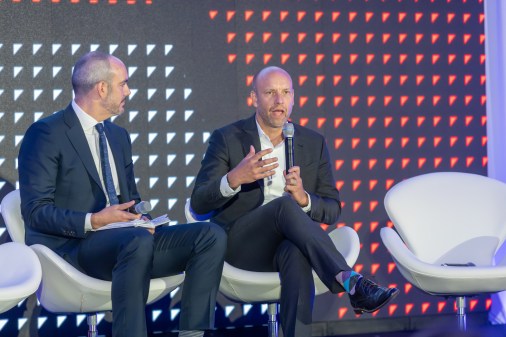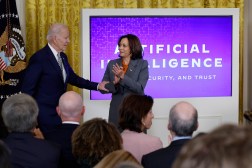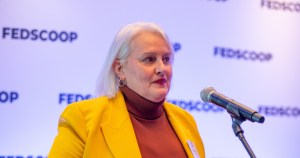Deputy U.S. CIO Schlosser: No modernization without collaboration

The Office of Management and Budget is using both the letter and the spirit of the Federal IT Acquisition Reform Act to force federal officials outside of the chief information officer’s office to think differently when it comes to modernizing their agency’s IT systems.
During a session at the Association of Government Accountants’ Federal Systems Summit, U.S. Deputy CIO Lisa Schlosser highlighted how OMB is working every angle from acquisition to development cycles when it comes to IT modernization.
“This isn’t just the CIO, this isn’t just the [chief financial officer’s] team, it’s not just acquisition,” Schlosser said. “To be successful in technology, this has to be a collaborative effort across these teams.”
While FITARA does hold the CIO more accountable than other officers, Schlosser stressed that OMB knows that unless their counterparts — especially from finance and procurement — are on the same page, results are going to be sparse.
“We recognize there is no way that we can actually take advantage of technology the right way without the CIO, CFO budget officers, as well as the acquisition officers, all working together,” she said.
A survey released Tuesday by the AGA found that those collaborative discussions are happening within agencies, but roadblocks — such as a lack of tech know-how in offices outside the CIO’s realm — are keeping agencies from understanding the true costs of their IT systems.
[Read more about the AGA survey: Even in the wake of FITARA, some CIOs struggle to show their value — survey]
To combat this, Schlosser said a better understanding of contract-related data is needed. She cited an example where agencies had failed to follow a benchmark price for mobile services, causing a variation of $10 to $20 per device in the prices each department paid.
In all, OMB found that an achievable 10-to-15 percent efficiency saving in the way the government manages and pays for its IT contracts would result in an annual cost reduction between $2.5 billion and $4 billion.
“If we really take the time to look at and understand our data around our contracts that we have, around the goods and services we procure, there are tons of opportunities for efficiencies where you can take those savings and reinvest that budget into the move toward more modern technologies,” Schlosser said.
OMB is also looking at how to rein in the maintenance costs of data centers and legacy systems. As of November 2015, the government is spending more than three-quarters (just under 76 percent) of its nearly $80 billion IT budget on operations and maintenance of current systems. Schlosser said she would like to see the spend on new tech development rise to the industry standard of 40 percent.
“To be perfectly honest, there are not many agencies that really should be hosting your own data centers these days,” she said. “You shouldn’t be hosting your own platform. There are cloud services now that allow you to perform these common functions across your organization in a much more effective way.”
Beyond procurement, Schlosser said agencies should look to the federal Digital Services Playbook for strategies to change the way services are delivered, including the use of agile development techniques.
OMB wants to get away from having agencies take years to develop projects with code written from scratch. “The way modern developers and the best companies in the world develop software is you start with existing code and you build around that code,” she said.
“No project should be taking years. Projects and functionalities should be delivered in weeks and months,” she said.
In order to support this, OMB is working to put digital services teams in agencies that model what the federal government has seen from offices like the U.S. Digital Services or the General Services Administration’s 18F. Schlosser said OMB is being more “proactive” with these teams, trying to set them up to encourage modernization instead of having them swoop in when an IT project needs saving.
“We’re trying to shift the whole culture of the way we buy, build and deliver technology,” she said.
“That does not mean we’re displacing all of you or your IT people,” Schlosser said. “We are just trying to bring in a different set of skills to work side-by-side with you as you are looking at your financial management systems and across your entire IT architecture, and bring in some modern digital practices.”
This entire effort comes at what Schlosser called “an inflection point” in the way the government uses technology. She used the metaphor of how Uber has disrupted the taxicab system for how technology can be used in the government beyond automating existing business practices.
“The difference between automating and digitization is the difference between taking a taxi and Uber,” she said. “Uber totally turned around and changed we think about transportation. Our challenge is to figure out how can we help the federal government take advantage of these modern technologies of digitization, improve mission support systems, and drive stronger results for internal operations and the missions we deliver externally for our citizens.”
Contact the reporter on this story via email at greg.otto@fedscoop.com, or follow him on Twitter at @gregotto. His OTR and PGP info can be found here. Subscribe to the Daily Scoop for stories like this in your inbox every morning by signing up here: fdscp.com/sign-me-on.






